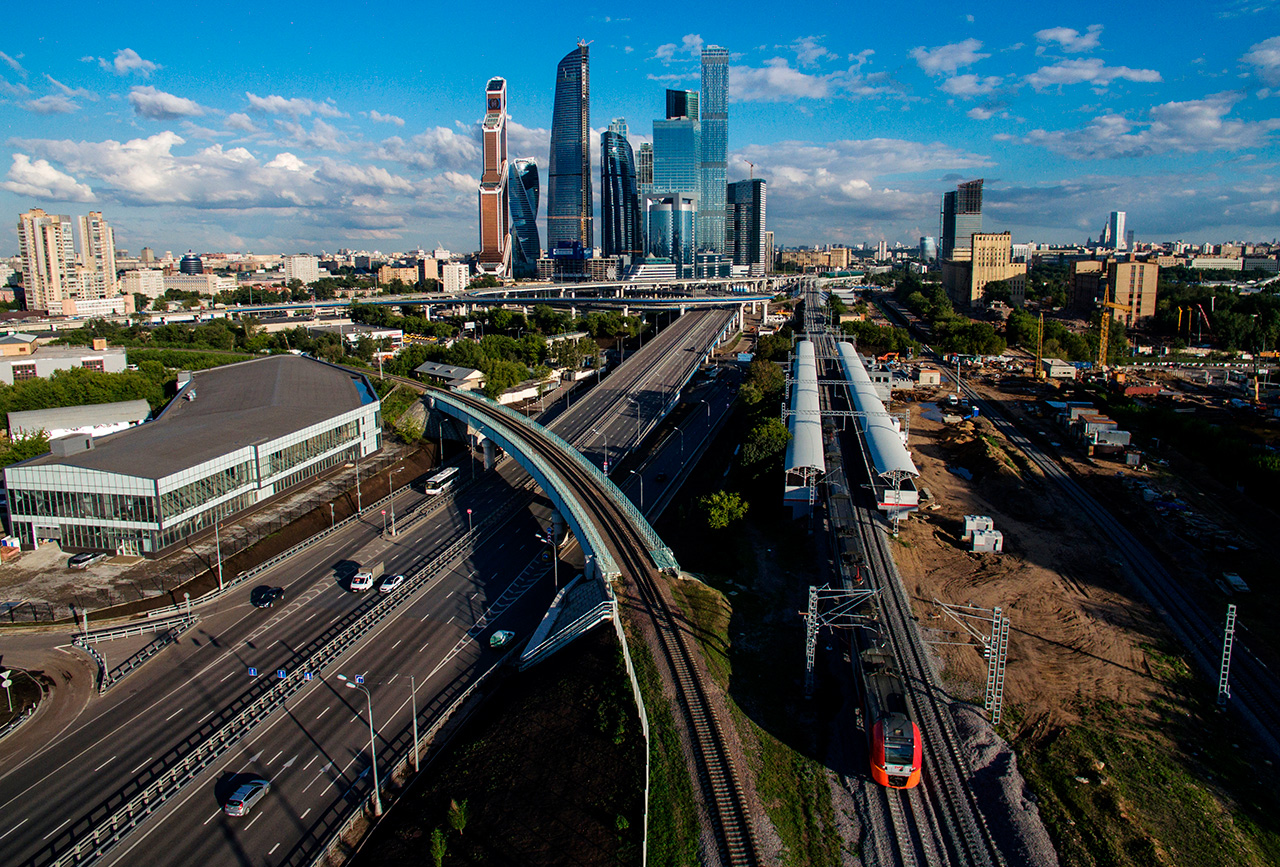“A developed country is not a place where the poor have cars. It’s where the rich use public transportation” – Gustavo Petro, Columbian politician.
Intelligent Transportation Systems
While recent digital technologies are drastically transforming vehicles and the way we interact with them, they have also been reshaping city transport infrastructure. Smart Infrastructure Technology, collectively known as Intelligent Transportation Systems (ITS), is at the delicate heart of what keeps us safe in our city’s roads and tunnel systems.
Examples of ITS Includes but is not limited to –
-
Real-Time Traveler Information
-
Traffic Signal Systems
-
Transportation Pricing
-
Traffic and Transit Management
-
Freeway Management Systems
With the utilization of ITS at the core of smart transportation in a country, there will be increased efficiency in existing systems and programs. With the integration of artificial intelligence (AI) and communication technologies, ITS has the ability to learn and adapt to changing scenarios which can help incorporate advanced management techniques and technologies to boost productivity.
If you want to continue reading about ITS, please click here for more information.
Satellite Communication
Satellite Navigation plays an important role in many ITS services. Satellite navigation is commonly used for traffic data collection and fleet management. Satellite communication provides backup communication capability, closing the coverage gaps of the terrestrial network. Satellite navigation also proves very cost efficient for many customers as there is little to no ground infrastructure or roaming involved.
Application of Satellite Communication in ITS
- Vehicle Tracking
- Automatic Crash Response
- Receiving Traffic Information
- Remote Vehicle Diagnostics
With the implementation of Satellite communication in ITS, there will be more efficient sharing of information throughout the process. With high-resolution satellite imagery and GIS capabilities integrated into the smart transportation system, there will be an end-to-end solution for the entire spectrum of challenges.
Give Our Roads A Voice

The future of transport is more than just the driver-less cars we sit in, it lies in the way we collect data from our environment.
One way to generate the necessary feedback for such systems is to make vehicles sensitive to the external infrastructure conditions. A smartphone app called Street Bump identifies potholes from the data collected when cars drive over them and automatically sends their exact location to the local transport department. Clever right? Infrastructure is, by itself, getting smarter.
This is not to say, however, that drivers cannot benefit from road infrastructure data. Vaisala, a Finnish company, has specially designed laser sensors that can be embedded in roads. These sensors can measure the roads temperature and assess whether it is covered in snow, water or ice. This data is then transmitted to the traffic management system which can then alert drivers to the adverse conditions ahead of them via overhead signs.
Being able to effectively construct and utilize traffic trends and patterns will help countries get a better knowledge of their traffic conditions which will give them the necessary information to start the development of traffic control initiatives. The problem with inefficient transportation is that it’s a time-ticking bomb as the global population grows at a startling rate. According to a report by the Population Reference Bureau (PRB), the world’s population could hit a staggering 9.9 billion by 2050.
Multi-Modal Transportation
What are some of the multi-modal transportation networks in a city? These typically range from Bus, metro, taxi, cycling and even walking through the transit. The accurate modeling of such networks in real time and on an ongoing daily monitoring system can help authorities keep track of changes and thus allow them to make science-backed decisions.
In a highly complex transportation network, determining an optimal path requires in-depth analysis that can be realized through the implementation of geospatially integrated networks (road, rail, pedestrian, cyclists, etc.) which can then form a single layer of information. This will not only make it easier for travelers to change network, but it will also help them make their environment less congested and polluted.
With every possible commuter being taken into consideration, the transport and traffic system would improve dramatically. People-centric transport solutions are important in any city. Needless to say, it would greatly reduce the number of accidents that happen in the city.
India – The Need for Transportation Improvements
As per a World Bank study, by 2031, roughly 600 million people are expected to live in India’s cities. In order to support the growing number of people living in cities, India will have to build TWO CITIES the size of Singapore EACH YEAR. This is massive. The transport infrastructure in India is estimated to grow at a compounded annual growth rate of 5.9%, easily becoming the fastest expanding component of the country’s infrastructure sector. It is a good thing that the country’s authorities have recognized the need for an improvement in its transport infrastructure as India’s accident and fatality rates are among the highest in the world. These accidents mainly affect the poor and vulnerable as they have no means of affording their own means of transportation.

Lack of quality and safe public transportation, road safety concerns, poor traffic management system, inadequate road conditions, theft, insufficient capacity of public transportation, etc. These are some of the lingering issues in most cities. Many of these cities lack the integrated transportation plans leading to a poorly developed transportation network. In today’s world smart transportation is the foundation for a well-developed country.
India has begun with a well-balanced focus in terms of improving public transport infrastructure as well as leveraging smart technology solutions into their system. While there is a lot to be done, the Government of India has been investing in various local initiatives (FAME, Green Mobility Fund, Make in India, etc.) to improve its quality of living.
Singapore – A Smart Nation
Smart Nation is the entire nation’s movement to harness digital technologies to promote smart capabilities. Singapore is chasing its vision of an economically competitive global city. These smart capabilities will further improve the standard of living in the country as well as build a closer community where accessibility is extremely easy.

Singapore has thoroughly invested itself in its smart urban mobility project; leveraging data and digital technologies, including artificial intelligence and autonomous vehicles, in order to enhance public transport. With the usage of public data in their transport planning, authorities have reported a 92% reduction in the number of bus services with crowding issues, despite the ever-increasing average bus ridership. If you are interested in viewing the publicly available data via LTA’s (Land Transport Authority) DataMall, please click here.
Smart transportation is a cornerstone of Singapore’s smart nation initiative. It has greatly enhanced the living conditions within the country and has helped maximize the utilization of land space in this land-scarce country.
Moscow – How it addressed its problems

(Moscow has been upgrading its transport system since 2010. Maksim Blinov / RIA Novosti)
Until 2010, the traffic situation in Moscow was close to critical – the Moscow had one of the worst road traffic situations in the world and its road network had reached maximum capacity. During the last 7-8 years, 60 new metro and MCC stations have been built, as well as additional regional railway lines. Trips have become so much easier and comfortable for the Muscovites. Russia has also recently won the transport Oscar, if you want to know more about how and why the capital city won this prestigious award, please click here.
Moscow has continually addressed this issue and has gone from the 1st (worst) to the 13th in traffic city congestion since 2010. While the number of cars in Moscow have increased by almost 25%, these amazing results have been achieved because of the record volumes of road construction and renovation was done in the country. With the strong focus on smart transportation, Moscow has completely changed its living standards within the country.
Moscow has implemented ITS (which includes smart traffic lights, speed cameras, and information screens) into its transport system. Thanks to the ITS, the number of traffic fatalities has had a commendable decrease of 40% since 2010. Find out more about Moscow’s Smart Transportation now.
Now, Moscow’s roads are the safest in Russia. Residents of the city have also begun to express how thrilled they are by the renovation in it. Click here to see what residents have to share regarding the city’s changes.
Conclusion
According to the UN, 1.3 million people are killed on the roads each year and if given no attention, this number could reach an estimated 1.9 million fatalities by 2020. In order to become more sustainable, livable and efficient – Cities need to become smarter. The key to harnessing the full potential of smart technology in any city is to, first, ensure that its occupants are prepared and ready for it. Smart transportation is the future.

